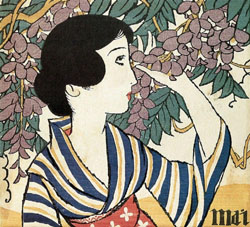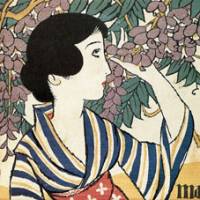Yumeji Takehisa Museum Closes on March 28
Located next to Tokyo University, the Yumeji Takehisa Museum is dedicated to one of the unique painters of the late Meiji (1868-1912) and Taisho (1912-28) eras. One of the reasons his art was so distinctive was because he was self-taught. His hanga prints and illustrations, featuring beautiful women, have a lot in common with Nihonga bijinga, but, free of artistic conventions, Takehisa was also able to successfully absorb foreign artistic influences and techniques while clinging to traditional subject matter and atmosphere.
While Nihonga bijinga tend to be doll-like and rigid, Takehisa's have a beautiful, sinuous, expressive quality combined with an atmosphere of melancholy. This bittersweet combination also made him the quintessential artist of the Taisho Era, a time of unparalleled prosperity for Japan that was marred by political struggles and the adverse effects of rapid industrialization.
With its 250 items, the exhibition strives to place the artist at the center of an extended artistic context — although he was always something of a populist outcast from elite artistic circles, making his living working as an illustrator for magazines such as Shin-Shojo (New Girl) and Fujin no tomo (Women's Friend), among others.
The exhibition's five sections include pictures of musicians, fashionable ladies and show-business figures. The unifying thread is the typical Yumeji beauty: a graceful, elegant, slightly put-upon creature in a kimono and with a faraway look in her eyes. She serves as an interesting counterpoint to the social reality of the time, which history tells us was dominated by the brashly confident and economically (and sexually) independent moga (modern girl), the Japanese equivalent of the West's flappers.


















With your current subscription plan you can comment on stories. However, before writing your first comment, please create a display name in the Profile section of your subscriber account page.